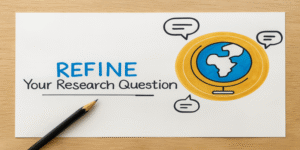In today’s fast-paced, digitally driven world, employers face a constant barrage of technological change, market volatility, and global uncertainty. As a result, adaptability and flexibility have become key attributes in the hiring process, particularly for graduates entering the workforce. These skills are not only central to organisational resilience but also to personal career progression in a competitive job market.
While recruitment advertisements may not always use the explicit terms “adaptable” or “flexible,” phrases like “a dynamic approach”, “willingness to grasp opportunities”, or “respond positively to change” signal the value employers place on these attributes. This article explores what recruiters are seeking when they assess adaptability and flexibility and how these qualities contribute to long-term success.
1.0 Understanding Adaptability and Flexibility
Adaptability refers to an individual’s capacity to adjust thoughts, behaviours, and emotions in response to new, changing, or uncertain conditions (Pulakos et al., 2000). Flexibility, in this context, means the openness to different ways of working, including variations in tasks, roles, or organisational structures.
These traits are especially valued in graduate recruitment, where individuals are expected to transition quickly from academic life to complex workplace environments (Lennox, 2025).
2.0 Why Employers Value These Qualities
Recruiters value adaptability because it reflects a candidate’s ability to:
- Learn quickly in new environments
- Work across functions or teams
- Handle uncertainty or unexpected tasks
- Respond positively to feedback and change
According to Chan et al. (2025), career sustainability in modern organisations is increasingly linked to growth mindsets, emotional resilience, and a willingness to evolve, all of which stem from being adaptable and flexible.
Organisations undergoing digital transformation, for example, often need employees who can quickly reskill or take on new roles without resistance. Employers seek graduates who thrive in ambiguity, not just survive it (Dzreke & Dzreke, 2025).
3.0 How Recruiters Assess These Skills
Recruiters assess adaptability and flexibility in several ways:
- Behavioural interviews with questions like: “Tell me about a time you had to deal with an unexpected challenge.”
- Situational judgement tests (SJTs) that place candidates in hypothetical workplace scenarios.
- Assessment centres involving team tasks where roles and instructions may shift mid-way to observe reactions.
The emphasis is not on perfection but on demonstrated ability to remain constructive, optimistic, and open-minded under pressure.
For instance, Lennox (2025) highlights how employers look for English graduates who can transfer their analytical and communication skills to unrelated fields, requiring adaptability in both thinking and approach.
4.0 Graduate Job Advertisements: Decoding the Language
Modern job ads use coded language to describe adaptability. Phrases such as:
- “A positive ‘can do’ attitude”
- “Ambitious graduates who respond with pace and energy”
- “Demonstrate a dynamic approach”
These all reflect a desire for individuals who can navigate complexity, embrace change, and take initiative without needing excessive supervision. Recruiters are essentially seeking psychological agility—the mental readiness to pivot quickly in fast-changing environments (Caratozzolo et al., 2025).
5.0 The Role of Attitude and Mindset
A positive attitude towards change often distinguishes high performers from average ones. Dweck’s (2006) concept of the growth mindset—the belief that skills can be developed through effort and learning—is central to this.
Graduates who approach tasks with curiosity rather than fear, and who see failure as feedback, are far more likely to be retained, promoted, and respected. They are seen as change enablers within the company.
For example, in a study by Mabweazara & Chekero (2025), early-career researchers who embraced reflective adaptability—modifying their methods and assumptions in the field—were more successful in navigating the complexities of qualitative research.
6.0 Examples in Practice
Consider the case of a graduate marketing assistant hired during a company’s transition to digital platforms. Within months, the role shifts from print-based tasks to content marketing via social media. Those who succeed are not necessarily those with the perfect technical skills, but those who:
- Quickly learn new platforms
- Volunteer to take on digital responsibilities
- Collaborate with colleagues across departments
- Stay calm under shifting expectations
This example illustrates the importance of versatility and initiative—two components strongly linked to adaptability.
7.0 Academic Evidence and Employer Expectations
Recent academic findings underscore the growing importance of adaptability in graduate employment. Chan et al. (2025) concluded that students who displayed resilience and openness to learning were more likely to sustain their careers beyond initial job satisfaction.
In addition, Dzreke & Dzreke (2025) found that human resources audits in East African tech firms highlighted a lack of flexible work mindsets as a significant gap in graduate readiness.
These studies support the idea that employers are not just seeking task-specific skills but also transferrable competencies that enable growth in evolving roles.
8.0 How Candidates Can Demonstrate Adaptability
To appeal to recruiters, candidates must:
- Share stories of past adaptation (e.g., adjusting to online learning during the COVID-19 pandemic)
- Highlight versatility in part-time jobs or extracurricular roles
- Display openness to feedback and a record of continuous learning
- Tailor CVs to show transferable competencies like problem-solving, teamwork, and time management
Graduate development programmes, such as internships or placement years, often focus on real-world tasks where unpredictability is normal. Engaging fully with these opportunities builds both confidence and adaptive capacity (Bhatti, 2025).
9.0 Adaptability in Future Workplaces
The future workplace is likely to be more volatile, automated, and hybrid. According to Sulistiawan (2025), career resilience will depend on the ability to manage transitions—between roles, industries, and even continents.
Employers will increasingly value lifelong learners who continuously upskill, reskill, and adapt to change as a norm rather than an exception. Being able to shift mindsets, collaborate virtually, and innovate with limited resources will be indispensable.
In conclusion, what recruiters want in terms of adaptability and flexibility is far more than compliance or obedience. They seek individuals who bring a proactive mindset, willingness to learn, and psychological readiness for change.
As organisations strive for agility, so must their employees. For graduates, this means developing not only knowledge but also the emotional and behavioural tools to handle uncertainty, embrace change, and shape their future with confidence.
References
Bhatti, K.S. (2025). The After Effects of the COVID-19 Pandemic on the Mental Health of International vs Domestic Students. University of San Francisco. https://repository.usfca.edu/diss/721/.
Caratozzolo, P., Chans, G.M. & Dominguez, A. (2025). Continuing engineering education for a sustainable future. Frontiers in Education. https://www.frontiersin.org/articles/10.3389/feduc.2025.1629507/abstract.
Chan, K.Y. et al. (2025). Growth Mindset and Readiness to Learn Predict Career Sustainability. Academy of Management Proceedings. https://journals.aom.org/doi/abs/10.5465/AMPROC.2025.10089abstract.
Dweck, C. (2006). Mindset: The New Psychology of Success. New York: Random House.
Dzreke, S.S. & Dzreke, S.E. (2025). Gendered firewalls: Intersectional barriers to women’s cybersecurity careers. Frontiers in Research. https://www.firjournal.com/index.php/pub/article/view/114.
Lennox, E. (2025). Supporting English Graduates Transition to Work. GILE Journal of Skills Development, 2(1), pp.45–59. https://real.mtak.hu/225796/.
Mabweazara, G.M. & Chekero, T. (2025). Lessons From the Frontline. International Journal of Qualitative Methods, 24, pp.1–17. https://journals.sagepub.com/doi/10.1177/16094069251360310.
Pulakos, E.D. et al. (2000). Adaptability in the workplace: Development of a taxonomy of adaptive performance. Journal of Applied Psychology, 85(4), pp.612–624.









